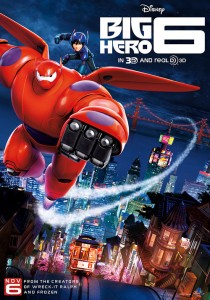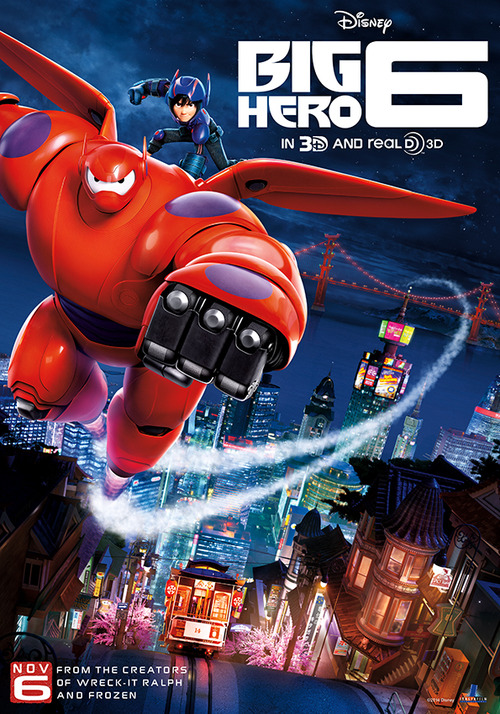
Movie goers excitedly crowded around the Cosford Cinema, playing giant games of “Jenga” and “Operation” before settling into the theatre to catch a sneak peak of the unreleased and unlikely group of superheroes in “Big Hero 6.”
On Monday evening, the Cinematic Arts Commission presented a preview of the upcoming Walt Disney Pictures film, set to release Friday. Excitement was high, as moviegoers enjoyed plenty of giveaways from Disney and games provided by the Engineering Advisory Board.
“Big Hero 6,” Disney’s first adaptation of their newly acquire Marvel Comics properties, is a frustrating movie. If the movie is a success, it is liable to finally take Disney out of the fantasy princess ghetto, and into a wider, more interesting variety of family and children’s entertainment.
On many levels, “Big Hero 6” did not disappoint. Filled with likable characters, charming dialogue and an important central theme on the nature of family and grief, it should have been a perfect film. However, the plot is so predictable and cliché that the movie, while a fun ride, fails to live up to its potential.
First, the positives: the film is gorgeous. There is no denying that. Each hair and fiber is lovingly rendered, with a strong anime-inspired stylization. In particular, the city setting deserves praise. It feels vibrant and alive, existing alongside the characters as opposed to merely housing them.
The characters are fun, and although none of the supporting cast gets as much screen time as you’d like to see, they play off of each other well and have a nice rhythm to their dialogue. The voice acting does a fine job, with Ryan Potter evoking both laughs and pathos in his turn as main character Hiro Hamada. Scott Adsit nails his comedic timing as the soft-spoken, clumsy robot Baymax.
Despite strong voice work by the cast, it is worth noting the disappointment that Disney once again refuses to find Asian-American actors to portray its Asian characters (with the exception of Jamie Chung, in the fairly forgettable role of GoGo Tamago).
The theme is also particularly strong. Very few children’s movies have the nerve to discuss such heavy themes as loss and grief, and “Big Hero 6” manages to handle it, being heartwarming and sentimental without being cloying.
However, the mechanical, heartless plot that drives the movie along is its ultimate downfall. The movie follows a three-act structure so rigid, that it feels more like watching an old sci-fi film serial than a cohesive whole. Certain effects and sequences felt thrown in just to be adapted either in the inevitable video game tie in, or the equally inevitable Disney World attraction.
And most unfortunate of all, the “twists” that the movie delighted in lingering over were so choreographed that I doubt even the children in the target audience would be surprised. The effect is an impersonal, sanitary movie. It’s the same kind of “designed by committee” feeling that somewhat damaged “Frozen” and made “Brave” so exceptionally forgettable. And that word, forgettable, is what best describes the film. While the audience smiled and played along throughout the film, afterward, there was a general consensus of dissatisfaction.
The film is adequate, but for viewers over the age of 13, a home viewing should suffice. What could have been a stunner, and brought Disney into a new age of smart, thoughtful, and yes, daring children’s cinema, instead becomes just another bland addition to their repertoire.







